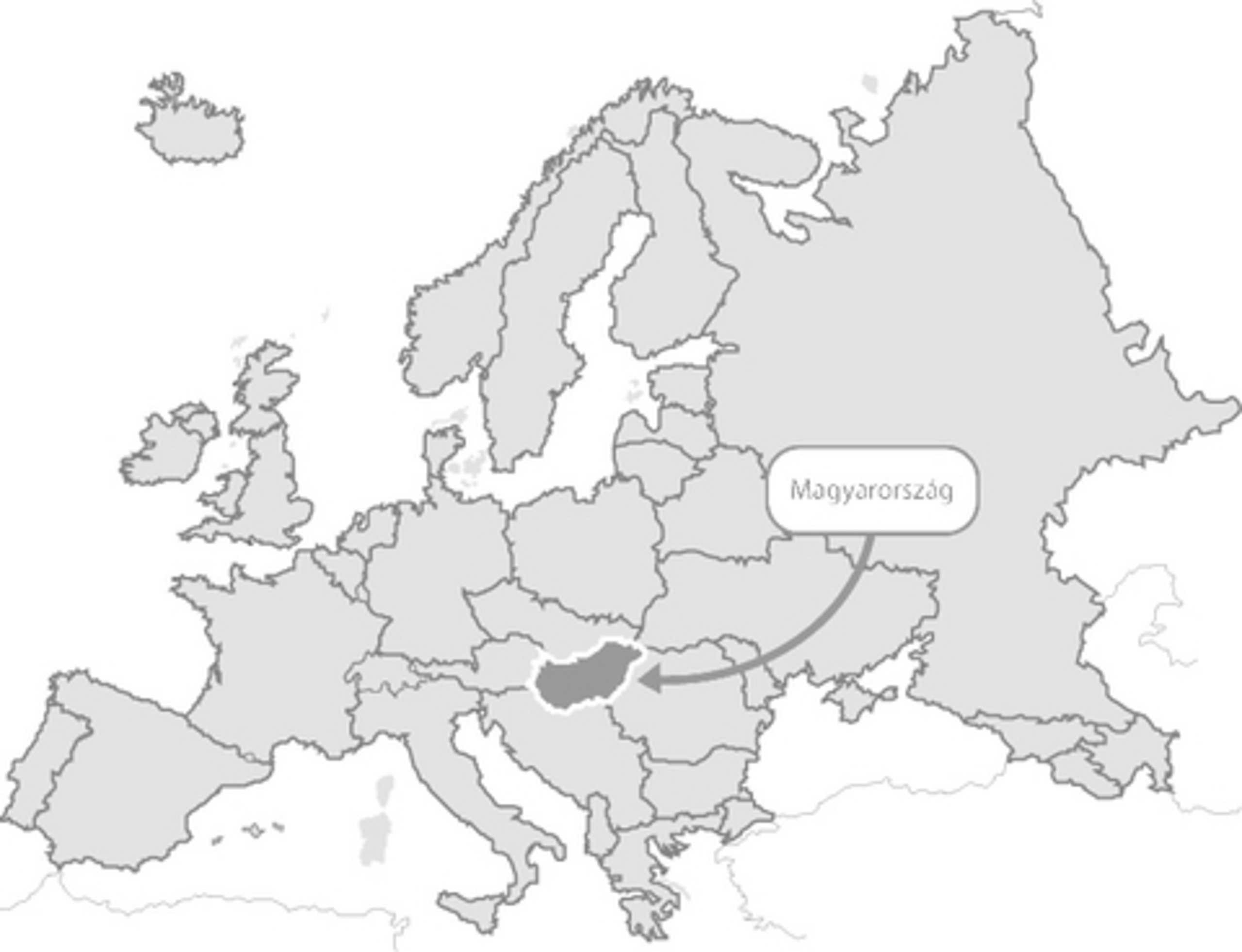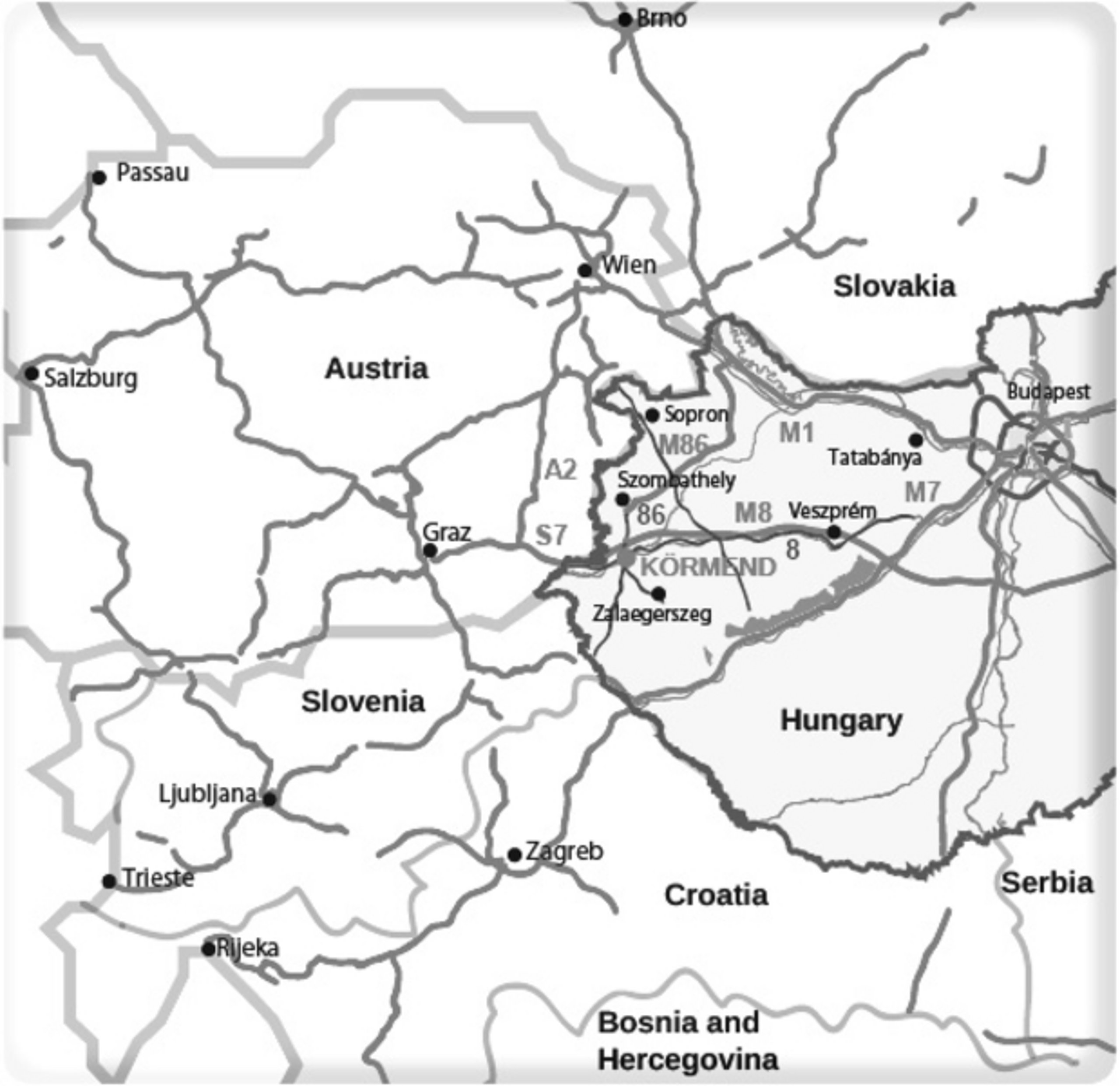Körmend
a small town in the heart of Europe
Where is it located?
Körmend is situated in a convenient area at the junction of 4 countries – Austria, Slovenia, Croatia and Hungary. As a regional and economical center, it not only supports the population of the city (12,800) but the population of the surrounding area (60,000).
The earliest facts we have of Villa Curmend terra regis – with means Körmend village, a royal estate, are from 1238. After the Mongol invasion of Béla IV, town privileges were awarded to the settlement – which already had a castle and a church. The landscape of the medieval town was dominated by buildings belonging to the church. The St. Martin church must have been built by the indigenous population, however the St. Elizabeth church was stood in the part of town where the hospes, German settlers, had settled. In the Middle Ages a parochial school was operated in Körmend. In 1605, the city became the possession of Ferenc Batthyány, who was the royal horse master. Since then, the history of the city and the castle has been linked to the Batthyány family. The Batthyánys made Körmend the center of their farm and managed their dominions – Körmend, Németújvár, Kanizsa, Dobra, Trautmansdorf – from here. At this time, Lajos Batthyány started to have the castle expanded and transformed into a baronial castle. The last owner of the castle, the beatified Lászlo Batthyány-Strattmann, operated an eye-hospital in one of the wings of the castle. After the First World War, Körmend’s natural surrounding narrowed and being a border-town was a hindering factor for development. Dynamic development of the town began in the 70s and it received its current urban landscape over the last two decades. In 1979 it was re-ranked as a city.
The main buildings of the castle are located in the centre of the city. Here you can find the Lászlo Batthyány-Strattmann Museum as well as the Legacy of Generations exhibition for the 750th anniversary of the city’s establishment. You can also view the only Shoe-history collection in the country. The garden around the castle is a protected park that has more than seventy different trees and shrubs with a 15-meter high obelisk in the center. The most famous tree is the 200-year-old maple-leaf plane tree. Next to the Rába bridge, a baroque sculpture of St. John of Nepomuk protects water travelers. Also part of the attractions are the neo-Gothic style Lutheran church as well as the reform church that was built in 1788, its interior walls being decorated with wall-paintings by Jenő Haranghy. On the Heroes’s Square stands a sculpture by Zsigmond Kisfaludi Stobl called the Heroic Monument. The Maria Immaculata sculputre is found in the Freedom Square. In Kölcsey Street, where a brewery used to be, an elementary school was built in 1902, and then in 1944 the Ludovica Academy took over the location.
Körmend’s other ’celebrity’ is the NB I.basketball team whose history goes back several decades. They have won the cup six times and were champions three times.
The Region
The small region borders Austria and Slovenia. It starts from the valley of the Rába river and is one of the country’s most diverse areas which includes the Őrség and the Vendvidék. Several monuments can be found here, and the area is also abounding in underground and surface water. All the surface water is collected in the Rába river. Several small, mostly man-made lakes are in the region (Himfa, Vadása, Döröske, Gersekarát), which are important destinations to the visitors looking to relax or go fishing. Due to the effects of the Atlantic, the climate is slightly cooler but more balanced than the other parts of the country in general. The clear, high quality fresh air of the sub-alpine climate is an important attraction for tourists.
According to archeological finds, this area has been inhabited since ancient times and we have some significant monuments from the Roman era as well.
This region of Transdanubia has almost continuous been scene of warfare due to its situation on the borderline since the XII century. Ancient fortresses and castles remind us of those times. Ethnic diversity is reflected in folk architecture and traditions. Some of their forms have remained until present times there are also some significant items in the open-air museum in Szalafő. The region’s geographical position has been re-valued and more appreciated since the fall of the communism and has become one of the main gates to the west. Relations – which are versatile and deep due to centuries’ history with Austria and Slovenia – are becoming more intense these days.
Leisure
Due to its good location, there are many recreation opportunities in Körmend. For those who prefer active recreation, a well-equipped gym is available. The professional basketball team has decades of history and welcomes visitors of all ages. In addition, football, handball, kickboxing and bowling divisions are running and an annual running race is held which involves all ages, called ’Cicle Körmend’. On the edge of town, a horse ranch is operated, providing services such as horse/carriage rides or education. Körmend is tied by thousands of threads to the Rába river, with its quietly flowing water and natural beauty providing great opportunities for rowing or swimming in summer. In summer many cultural and sport (beach-basketball, beach football) events take place on the nicely developed beach.
The diverse and varied landscape is suitable for hiking and bike tours on the designated routes in Őrség and nearby Vendvidék. In this small region, several natural and man-made lakes offer fishing and recreation opportunities for those who come to visit or those who live here. The possibility of hunting is also worthy of a mention. The city hosts many traditional and cultural events, which include both domestic and foreign guests. In the castle, theatre plays are performed regularly introducing well-known actors and companies.
In the spring of 2010, an entertainment and wellness center was opened which is unique in western Hungary, offering a wide range of services in the real Italian style. The wellness center is situated in a round shape building with Finnish and Roman saunas, steam rooms, frigidarium, aroma showers and Kneipp tread. The connected health center offers fully renewing beauty treatments and massages for all visitors. The huge area of the thermal park, with food and drink made from real Italian ingredients, the two-story disco club and the six lane bowling alley all bring a real Italian lifestyle to Körmend.
Institutions
Mayor’s office:
Körmend, Szabadság tér 7.
Phone: 94/592-900
- Document office
- Building Authority
- Technical office
- Tax office
Public Notary:
Körmend, Szabadság tér 4.
Phone: 94/594-080
Land Registry:
Körmend, Szabadság tér 4.
Phone: 94/410-402
Western Transdanubia Regional Labour Centre Körmend Branch:
Körmend, Szabadság tér 5.
Phone: 946411-413
Dr. Lászlo Batthyány-Strattmann Hospital:
Körmend, Munkácsy M. u. 1.
Phone: 94/592-560
Post Office:
Körmend, Dr. Batthyany-Strattmann L. u. 1
Phone: 94/410-404
Railway Station:
Vas Volan bus station: Körmend, Kossuth L. u. 2
Banks:
OTP Bank:
Körmend, Vida J. u. 2.
Phone: 94/592-730
Raiffeisen Bank:
Körmend, Bástya u. 1.
Phone: 40/484-848
Kereskedelmi és Hitelbank:
Körmend, Vida J. u.1.
Phone: 94/592-512
Sopron Bank Burgenland:
Körmend, Szabadság tér 12.
Phone: 94/592-780
Savaria Takarékszövetkezet:
Körmend, Thököly u. 1.
Phone: 94/594-012
Körmend és Vidéke Takarékszövetkezet:
Körmend, Rákóczi F.u. 32.
Phone: 592-531


